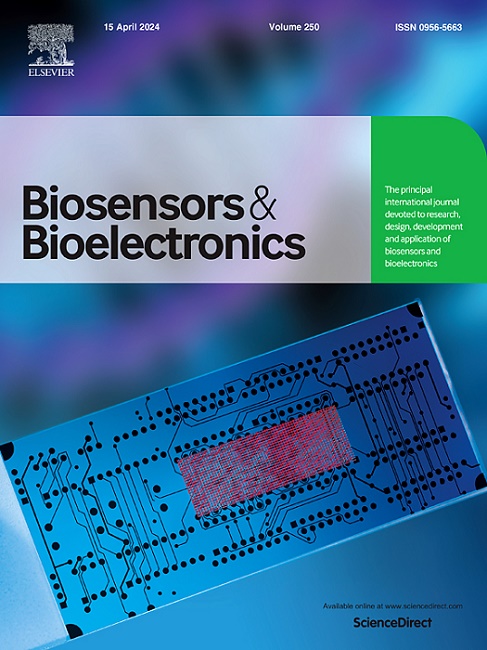Aggregation-induced emission(AIE)for next-generation biosensing and imaging: A review
IF 10.5
1区 生物学
Q1 BIOPHYSICS
引用次数: 0
Abstract
Luminescence technology is a powerful analytical tool for biomedical research as well as for marker detection. Luminescent materials with aggregation-induced emission (AIE) properties have attracted extensive research interest, and their unique luminescence characteristics, biocompatibility, and sensitivity make them useful for the development of fluorescence-turn-on biosensors with superior sensitivity. While numerous reviews have focused on the design of AIEgens, comprehensive summaries on the strategies for biosensor preparation and application fields remain limited. In this review, we provide a concise introduction to the discovery and mechanism of the AIE phenomenon and summarize the working principles of classic AIE molecules. We discuss luminescence tuning strategies and functionalization methods for AIEgens, along with the design and preparation of AIE-based biosensors. Typical applications of AIE in biosensing and imaging are outlined, and we analyze the current limitations and future research directions of AIE technology in these fields. We hope this review will serve as a valuable reference for researchers in this rapidly developing field. The insights provided may facilitate the rational design of next-generation biosensors based on AIE technology, exhibiting promising avenues of biomedical applications and vast potential for growth.

聚合诱导发射(AIE)用于下一代生物传感和成像:综述。
发光技术是生物医学研究和标记检测的有力分析工具。具有聚集致发射(AIE)特性的发光材料引起了广泛的研究兴趣,其独特的发光特性、生物相容性和灵敏度使其成为开发具有高灵敏度的荧光开启生物传感器的有用材料。虽然有大量的综述集中在AIEgens的设计上,但对生物传感器的制备策略和应用领域的综合总结仍然有限。本文简要介绍了AIE现象的发现及其机制,并对经典AIE分子的工作原理进行了综述。我们讨论了AIEgens的发光调谐策略和功能化方法,以及基于AIEgens的生物传感器的设计和制备。概述了AIE在生物传感和成像领域的典型应用,分析了AIE技术在这些领域的局限性和未来的研究方向。我们希望这篇综述能对这一快速发展领域的研究人员提供有价值的参考。所提供的见解可能有助于基于AIE技术的下一代生物传感器的合理设计,显示出有希望的生物医学应用途径和巨大的增长潜力。
本文章由计算机程序翻译,如有差异,请以英文原文为准。
求助全文
约1分钟内获得全文
求助全文
来源期刊

Biosensors and Bioelectronics
工程技术-电化学
CiteScore
20.80
自引率
7.10%
发文量
1006
审稿时长
29 days
期刊介绍:
Biosensors & Bioelectronics, along with its open access companion journal Biosensors & Bioelectronics: X, is the leading international publication in the field of biosensors and bioelectronics. It covers research, design, development, and application of biosensors, which are analytical devices incorporating biological materials with physicochemical transducers. These devices, including sensors, DNA chips, electronic noses, and lab-on-a-chip, produce digital signals proportional to specific analytes. Examples include immunosensors and enzyme-based biosensors, applied in various fields such as medicine, environmental monitoring, and food industry. The journal also focuses on molecular and supramolecular structures for enhancing device performance.
 求助内容:
求助内容: 应助结果提醒方式:
应助结果提醒方式:


